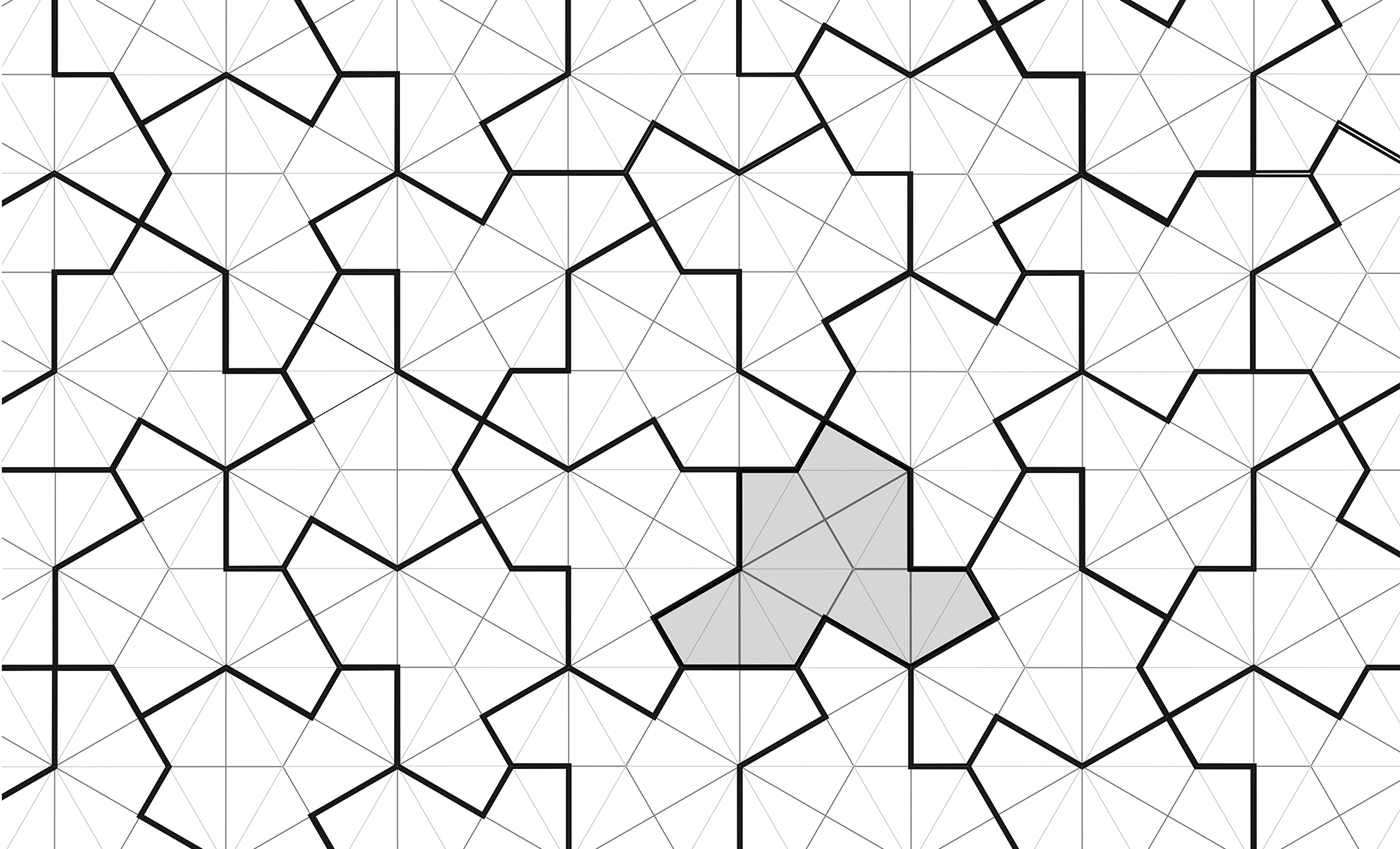Problems
We’ll explore how to tile the plane using rectangles, more general quadrilaterals, pentagons and more unconventional shapes. In this exercise sheet, we define a plane tiling as a covering of the entire plane, without any gaps or overlaps, using identical geometric shapes that can be rotated or reflected to one another. Usually, it is sufficient to cover a small portion of the plane with a particular pattern that we see can be extended to cover the entire plane.
In the majority of today’s problems, one only needs to create a pattern for a small section of the plane, which can then be extended to cover the entire plane through repetition. Such tilings are referred to as periodic. Finding a tiling of the plane using identical shapes that is not periodic, meaning the pattern never repeats itself, has been a long-standing open problem. However, this problem was solved in an article published in March 2023 by David Smith, Joseph Samuel Myers, Craig S. Kaplan, and Chaim Goodman-Strauss. The idea of their solution is the following diagram from the article:

The hard part is to prove that this tiling is aperiodic.
How many integers less than \(2025\) are divisible by \(18\) or \(21\), but not both?
Determine all prime numbers \(p\) such that \(p^2-6\) and \(p^2+6\) are both prime numbers.
Let \(ABCD\) be a square and let \(X\) be any point on side \(BC\) between \(B\) and \(C\). Let \(Y\) be the point on line \(CD\) such that \(BX=YD\) and \(D\) is between \(C\) and \(Y\). Prove that the midpoint of \(XY\) lies on diagonal \(BD\).
Let \(ABCD\) be a trapezium such that \(AB\) is parallel to \(CD\). Let \(E\) be the intersection of diagonals \(AC\) and \(BD\). Suppose that \(AB=BE\) and \(AC=DE\). Prove that the internal angle bisector of \(\angle BAC\) is perpendicular to \(AD\).
Let \(ABC\) be an isosceles triangle with \(AB=AC\). Point \(D\) lies on side \(AC\) such that \(BD\) is the angle bisector of \(\angle ABC\). Point \(E\) lies on side \(BC\) between \(B\) and \(C\) such that \(BE=CD\). Prove that \(DE\) is parallel to \(AB\).
Is it possible to place a positive integer in every cell of a \(10\times10\) array in such a way that both the following conditions are satisfied?
Each number (not in the bottom row) is a proper divisor of the number immediately below.
The numbers in each row, rearrange if necessary, form a sequence of 10 consecutive numbers.
A round-robin tournament is one where each team plays every other
team exactly once. Five teams take part in such a tournament getting:
\(3\) points for a win, \(1\) point for a draw and \(0\) points for a loss. At the end of the
tournament the teams are ranked from first to last according to the
number of points.
Is it possible that at the end of the tournament, each team has a
different number of points, and each team except for the team ranked
last has exactly two more points than the next-ranked team?
\(ABCD\) is a rectangle with side lengths \(AB=CD=1\) and \(BC=DA=2\). Let \(M\) be the midpoint of \(AD\). Point \(P\) lies on the opposite side of line \(MB\) to \(A\), such that triangle \(MBP\) is equilateral. Find the value of \(\angle PCB\).
Josie and Kevin are each thinking of a two digit positive integer. Josie’s number is twice as big as Kevin’s. One digit of Kevin’s number is equal to the sum of digits of Josie’s number. The other digit of Kevin’s number is equal to the difference between the digits of Josie’s number. What is the sum of Kevin and Josie’s numbers?